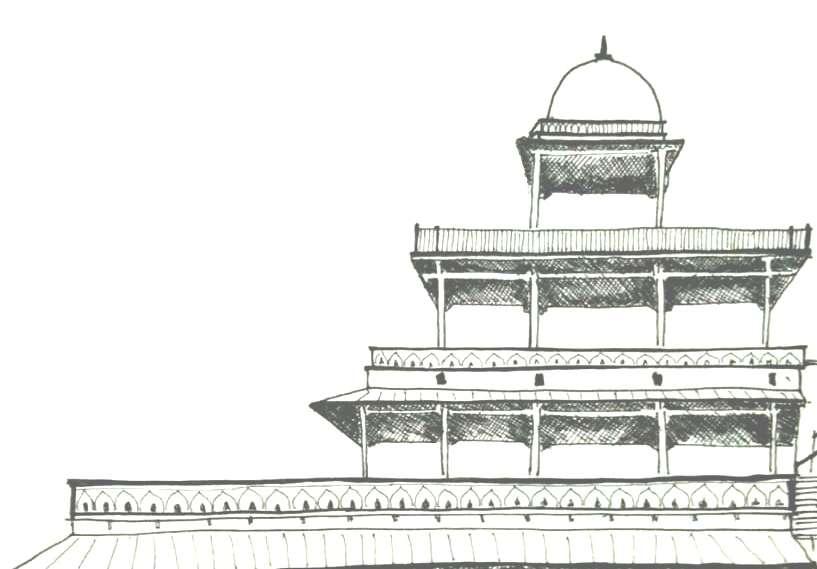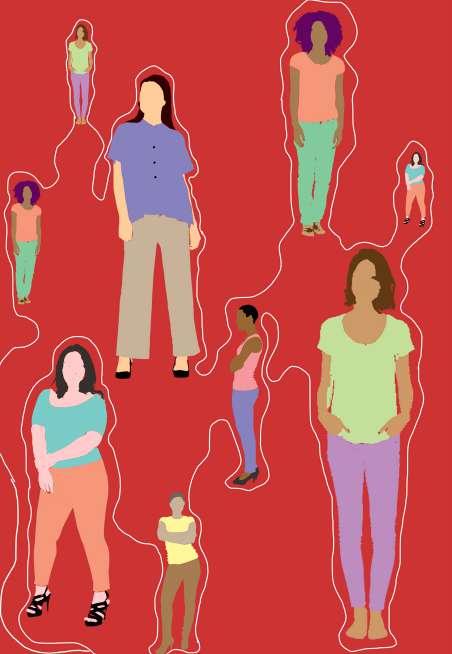
6 minute read
6 other works
OTHER WORKS
As the dawn breaks, and you are on a halt on one of those old stations, the bustle out the frame catches attention. While the whistle from the long-gone engine blows, aroma of the hot ginger tea fills in your nose. And then you see a figure, amidst the fog, coming from the direction of beautiful words “chai, chai, Chai”. The picture becomes clear with the voice coming closure and suddenly the eye is struck with a shine. Shine from the glaring vessel of dew being effortlessly spotted by every eye. This gorgeous aluminium sculpture is then tilted to an angle, neither too high nor too low, just enough. Enough to let the brown brew flow like fresh spring out of the spout. And one must know that the spout is no ordinary either. It’s sensual. Magnificant like an Elephant trumpet it is also slender with a feminine delicacy. Tenderly serving on the cups, the spout is an attention seeker. While one is still amazed with the flowing dew, there is also a selfless presence of the lid with a knob. Nourishing it like a child, lid assures to keep the dew hot and healthy and remains mute. Sending off the cup holder with a warm smile under mist, chaiwala holds his tin of treasure and walks further marching with the cluttering sound. Holding on to the handle, little does he know of how easy it has become to carry it along with the load of his other objects. But, above all this, was the choice made while creating this vessel. Choice to make it for our favourite chaiwala and many other vendors. Choice to keep it simple, raw and cost-efficient. So now, it bears the load of a breadwinner for many households.
Advertisement

KETALEE EK KATHA
concept writing

UNDERWORLD WOMEN OF ARCHITECTURE
critical essay
World surely has changed from the last time we checked. Like all other professions, in architecture too, male dominance is not a trend anymore. But, its that old pair of jeans. Never outdated. The list of architects one can come across is a long one, but how many of them are women? Zaha Hadid surely is, but what’s next? Men again. Almost 50 percent of the students enrolled in architectural education are females. But the percent comes down to almost 17 percent in a professional practice. While some of them stop to get married, a lot are just invisible. Where designation such as male architects would be considered an absurdity, the tag of female architects is made the headlines of a news. Men are the creative architects while women architects are just women in need of justice. The recent world evidently realizes the presence of women in architecture. Articles in news letter and magazines are endless about women in architecture. But they just speak about the struggle and injustice, while works of men are glorified. Absurdity needs a new definition. Although not all of them remained invisible, many have risen and achieved great success. The idea of a star architect or starchitect is very prominent where the authorship of a firm is given to solely one person irrespective of other staffs working in it. For example, we clearly identify OMA with Rem Koolhaas and Foster + Partners with Norman Foster while there are thousands of other people who worked for these firms. But its ironical that in this current system too, whether the women are workers working under any of these firms or are the stars of their practice, the attribute of authorship is given to them as being females and not for their work. This has also made many headlines in past years. Incidents when Prominent awards have been presented to the male half of equal architectural partnerships are not rare. The controversial decision to award Robert Venturi the Pritzker Prize in 1991 but not practice co-founder Scott Brown is an example everyone know of. This did spark a campaign for a petition for Scott brown to be given the Pritzker in 2013 retrospectively. But it failed. It is sad to come across incidents where women have to rebel and raise campaigns just to be recognized for the
work she has done with commendable quality. This is not the only example one can name when talking about authorities and recognition rights for women. In 2012, Wang Shu received the Pritzker Prize without the practice co-founder Lu Wenyu, and in 2013 Matthias Sauerbruch of Sauerbruch Hutton was initially awarded the Gottfried Semper Architekturpreis alone without acknowledging equal founding partner Louisa Hutton although the decision was later reversed when Sauerbruch objected. The controversial news of 2014 when Patty Hopkins, co-founder of Hopkins Architects, was photoshopped out of an image with her husband Michael Hopkins during the promotion of a BBC documentary, The Brits who Built the Modern World, is yet another example of architectural world clinging on to male dominance. One can note that in all the above cases and in many more which haven’t been yet spoken about, the unsung architects were wives of their glorified husbands. This relates to one of the texts of Freeman’s definition of sexism, described in her 1971 text, given in The Women’s Liberation Movement: Its Origins, Structures and Ideas. She writes that ‘Sexism embodies two core concepts’, with first being ‘that men do the important work in the world and the work done by men is what is important’, while the second ‘is that women’s identities are defined by their relationship to men and their social value by that of the men they are related to’. Scott brown is one of the women who has always been open about their anguish because of injustice in the profession. The problem of women not being acknowledged goes back to the history or one can say roots to it. Their work not being recognized and published leaves internet with very less references on any women in the profession and hence there are no role models for arising female architect to look up to. Scott brown has many times pointed out this problem of lack of publication of women’s work. She says ‘for a few years, writers on architecture were interested in sexism and the feminist movement … in a joint interview, they would ask Bob about work and question me about my “woman’s problem”. “Write about my work!” I would plead, but they seldom did.’ Unpublished work of women leaves an assumption of women being absent in the world of architecture and an idea of architecture is only suitable to men. Hence, no research or documents are initiated for the so called ‘female architects’ and they remain invisible. When talking about acknowledgment in the profession of architecture, the panel members of various competitions. They are all men. Thus, has the new term emerged ‘manels’. Even with women of high experiences and most senior levels, the opportunities are mainly given to the boy’s club. To detox this, some of the rebel female architects called as the Feminist collective Rebel Architette have come up with the project of Women Architects World Map. This is an interactive map of women-led architecture practices and can be used as a guide to women architects and their practices around the world. This interactive Women Architects World Map displays countries with the number of female architects over each country and by clicking on it, it zooms into regions with name of the practices with their addresses. Initiatives are also taken to edit Wikipedia with more information and acknowledgment of women architects as it says that history is only made when written. Currently, women architects make up a very little part of the website’s information. Hence is the initiative. But the very fact that these initiatives are being taken now or the need to take these initiatives itself is and the evidence to the fact that women are still invisible.
We should attempt to bring nature, houses, and human beings together in a higher unity.
Ludwig Mies van der Rohe


